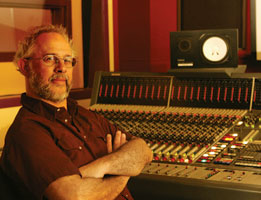By Steve Oppenheimer
(May 2007)
It hopefully has not escaped your notice that we have increased our coverage of audio for picture lately. For example, in our February 2007 “Music Business Insider” column, we interviewed Los Angeles music supervisor Jack Rudy about placing independent music in films and TV shows. In the April issue, we discussed producing and composing for mobile games, a rapidly emerging market. In this issue, we’ve doubled the ante with two features about producing audio for picture (see “Picture Window” on p. 40 and “The Sound of a Craving Heart” on p. 33).
“But I produce music for CD,” you may say. “What’s with the sound-for-picture coverage all of a sudden?” It’s true that although we have covered sound for picture in the past, it has not been a major focus of the magazine. That’s because until recently; the opportunities to do sound for picture in a personal studio were quite limited, especially if you wanted to make money doing it. But no longer. Today, thanks to the tremendous power of computers and software, you can produce pro-quality sound for independent films, animation, industrial videos, local TV, video games, and video for the Web — all in a personal studio.
In response, we are increasing our coverage of audio for picture. We aren’t going to write a lot about video production per se, although we will discuss it occasionally. We’ll continue to concentrate on audio production and sound design. But sound for picture is likely to eventually become a part of your studio world, and we’ll help you prepare for that.
Composing, arranging, and producing music is a challenge, and producing sound for picture presents additional difficulties. But for those electronic musicians who have physical disabilities, producing music of any sort presents very special and daunting challenges.
Over the years, I have gotten to know a number of these dedicated and talented musicians, especially several sight-impaired musicians. We contact each other in person, via email, and on the phone to discuss, among other things, ways to make studio tools more accessible to them. In addition, we periodically receive letters from musicians with disabilities who need to find accessible tools. These folks have taught me much about what one can do if one is determined, talented, persistent, and patient.
As a result, I have long wanted to publish an article on studio solutions for musicians with disabilities. And I knew from the beginning that Joanna Cazden and Scott Wilkinson were the right authors for such a story. Cazden is a speech therapist whose work and training, as well as her experience writing for our magazines, made her a natural choice. A former EM technical editor, Wilkinson has a voracious appetite for science that is well known to anyone who reads his monthly “Tech Page” column. Perhaps more important is that they have big, warm hearts and a deep interest in helping others. Wilkinson and Cazden are a natural team — they’re husband and wife, as well as musical partners. The resulting article (see “Overcoming Adversity” on p. 63) is a bit different from our usual fare, but I think you will agree that it’s a welcome and refreshing change.
